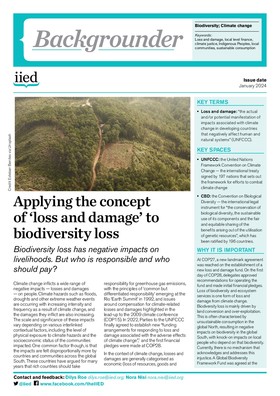Applying the concept of ‘loss and damage’ to biodiversity loss

Biodiversity loss has negative impacts on livelihoods. But who is responsible and who should pay?
Loss of biodiversity and ecosystem services is one form of loss and damage from climate change, often characterised by unsustainable consumption in the global North, resulting in negative impacts on biodiversity in the global South, with knock-on impacts on local people who depend on that biodiversity.
At COP27, a new landmark agreement was reached on the establishment of a new loss and damage fund, and the first financial pledges were made at COP28.
Loss of biodiversity is considered a type of non-economic loss and damage, which means that biodiversity loss could, in principle, be considered eligible for loss and damage payments. But despite the impacts that climate change has on biodiversity, the main drivers of biodiversity loss are habitat loss and degradation as well as over-exploitation.
Losses and damages from these non-climatic drivers would not be eligible for reparations under the climate-linked loss and damage fund. Yet these impacts are significant. Not only is it crucial that the loss and damage fund adequately addresses the loss and damage to biodiversity and ecosystem services caused by climate change, but an additional mechanism may be required to address the loss that occurs from unsustainable consumption.
Cite this publication
Available at https://www.iied.org/22221iied
